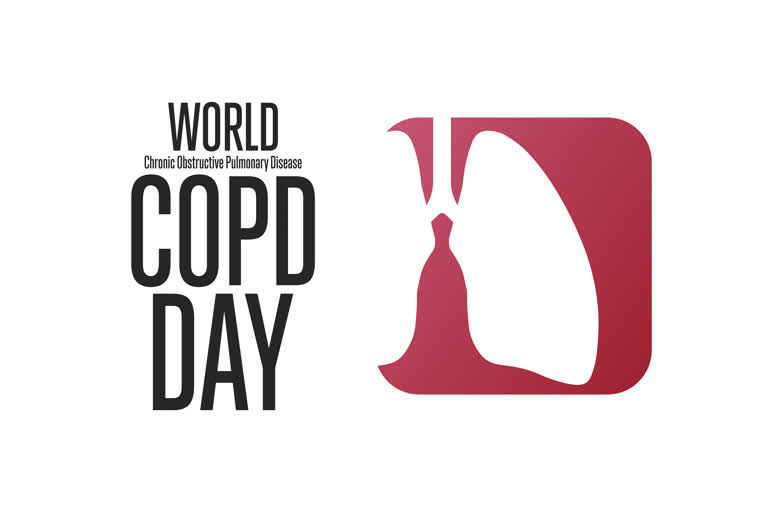Chronic Obstructive Pulmonary Disease or COPD is an inflammatory lung disease that causes breathlessness. Although it is a common condition, many people are unaware of it. Therefore, to create awareness and improve COPD care, every year World COPD Day is organized by the Global Initiative for Chronic Obstructive Lung Disease (GOLD) along with healthcare professionals and COPD patients throughout the world. The day is observed on 18th November and the theme is “Living Well With COPD- Everybody, Everywhere”.
The World Health Organisation (WHO) estimates that 65 million people have moderate to severe chronic obstructive pulmonary disease (COPD). Globally, it is estimated that 3.17 million deaths were caused by the disease in 2015 (that is, 5% of all deaths globally in that year). More than 90% of COPD deaths occur in low and middle-income countries. It further states that the Global Burden of Disease Study reports a prevalence of 251 million cases of COPD globally in 2016.
What is COPD?
WHO explains that Chronic obstructive pulmonary disease is a lung disease that is characterized by a persistent reduction of airflow. The symptoms of COPD are progressively worsening and persistent breathlessness on exertion, eventually leading to breathlessness at rest. It tends to be underdiagnosed and can be life-threatening. The more familiar terms “chronic bronchitis” and “emphysema” have often been used as labels for the condition.
Symptoms
The most common symptoms of COPD include:
- Breathlessness
- Chronic coughing
- Wheezing
- Excess production of phlegm or sputum
- Frequent respiratory infections
- Fatigue
Effects Of COPD
The Centers for Disease Control and Prevention (CDC) says that as compared to adults without COPD, those with this disease are more likely to:
- Have activity limitations like difficulty walking or climbing stairs
- Be unable to work
- Need special equipment like portable oxygen tanks
- Not engage in social activities like eating out, going to places of worship, going to group events, or getting together with friends or neighbors
- Have increased confusion or memory loss
- Have more emergency room visits or overnight hospital stays
- Have other chronic diseases like arthritis, congestive heart failure, diabetes, coronary heart disease, stroke, or asthma
- Have depression or other mental or emotional conditions
- Report a fair or poor health status
COPD treatment
Along with the medication prescribed to manage the COPD symptoms by the doctor, CDC states some of the additional treatment options that your physician may consider, which are:
- Quit smoking
- Avoid tobacco smoke and other air pollutants
- Ask your doctor about pulmonary rehabilitation
- Take medication
- Avoid lung infections
- Use supplemental oxygen
Breathing Exercises For COPD Patients
The American Lung Association suggests 2 breathing exercises to make the lungs more efficient for COPD patients.
- Pursed Lip Breathing
This exercise reduces the number of breaths you take and keeps your airways open longer. More air is able to flow in and out of your lungs so you can be more physically active. To practice it, simply breathe in through your nose and breathe out at least twice as long through your mouth, with pursed lips. - Belly Breathing, aka Diaphragmatic Breathing
As with pursed-lip breathing, start by breathing in through your nose. Pay attention to how your belly fills up with air. You can put your hands lightly on your stomach, or place a tissue box on it, so you can be aware of your belly rising and falling. Breathe out through your mouth at least two to three times as long as your inhale. Be sure to relax your neck and shoulders as you retrain your diaphragm to take on the work of helping to fill and empty your lungs.
Practice these for 5-10 minutes every day. Also, since we are living with the COVID-19 pandemic, COPD patients fall under the high-risk group. If you have COPD, follow your medications as prescribed, avoid triggers, stock up your medicines, check with your oxygen supplier, keep your inhaler handy, and stay home as much as possible. If symptoms seem to worsen, contact your doctor or healthcare provider immediately.



